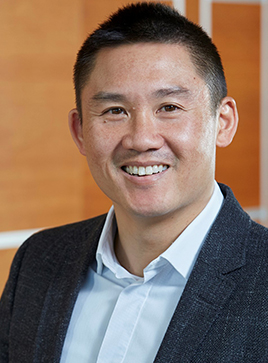COVID-19

The long view: How the Prospective Urban and Rural Epidemiological (PURE) study is gaining insights into COVID-19

Although 2020 may feel like one of the longest years on record, the COVID-19 pandemic has only been with us for a matter of months. While remarkable research progress has been made in that short time, the newness of the illness and the global scope of the pandemic still leave a number of issues unanswered.
For Dr. Darryl Leong, a scientist with the Population Health Research Institute at McMaster University, two big questions stand out.
"Why do some people get COVID-19 while others do not, even with similar degrees of exposure?" he asks. "Or, put another way, are there factors that make someone more susceptible to infection? Or protect them from it? We don't know yet. And secondly, if someone does get infected, what are the long-term effects on their health, whether they have severe symptoms or not?"
On the surface, these questions seem straightforward, but investigating them properly is a complex task. Doing so requires having access to data about thousands of people and their COVID-19 history, as well as the ability to track them over time to gather information about any long-term health consequences they experience. This type of research is best served by a large cohort study, which involves recruiting volunteer participants and collecting the same details from each of them over time.
Initiating such a study can be a time-consuming endeavour, but Dr. Leong is already well positioned to build on existing work. He is one of the researchers involved in the Prospective Urban and Rural Epidemiological (PURE) study, a long-running research project involving more than 1,000 urban and rural communities in 27 high-, middle- and low-income countries. Approximately 200,000 adults have been participating in the study for the past 10 years, making it comparatively easier for Dr. Leong to now initiate a sub-study to collect COVID-19-related information from a group of those existing volunteers.
"Most of what we currently know about COVID-19 is from patients who come to hospital or who get tested because they're showing symptoms," explains Dr. Leong. "This limits the information we have about the disease, because it means the research available to date may not include data on many individuals who had COVID-19 but were never properly diagnosed. With the PURE study, however, we have already collected a lot of information from participants—including lots of details about their lives pre-COVID-19—so we will be able to address some gaps in our current knowledge about the disease."
To address those gaps, Dr. Leong's team will invite 40,000 participants in the PURE study across 13 countries to provide a new blood sample, which they will test for COVID-19 antibodies. The team will then compare the characteristics of participants who have had COVID-19 (i.e., those who had the antibodies) with those who did not get COVID-19 to see which characteristics are more common in those who did not get the infection.
What is a cohort study?
A cohort study involves collecting information about a large group of people in order to gain insights about factors that contribute to health and disease.
These studies recruit participants to fill out questionnaires (e.g., about diet, mental health status, or home life), provide biological samples (e.g., blood or urine), and/or undergo medical tests to gather other information (e.g., weight, lung function or cardiovascular fitness). Because these studies can last for months or years, participants are usually asked to submit this information at multiple points in time so that the researchers can capture details about changes in their health and circumstances.
Cohort studies are observational in nature, which means that researchers collect information from participants without intervening in their lives.
The data collected through cohort studies can shine a light on risk factors for certain diseases or show correlations between lifestyle choices/circumstances and health protection.
"We are trying to identify factors that predispose people to getting COVID-19 or protect them from it, which is important for developing evidence-based advice about how to limit the risk of infection," he says. "With the size of this study, we'll be able to consider whether dietary factors, exercise levels, smoking habits, alcohol use, lung function, or muscle strength could have an impact on a person's susceptibility to the disease, and even the severity of it."
For participants who have had COVID-19, even if they experienced a mild or asymptomatic case, the study will continue with another test to see if they show any signs of lung injury from the infection. And while the team is aiming to collect and analyze the data from all of the participants by mid-2021, Dr. Leong also plans to track them for an additional three years to see if those who had COVID-19 develop late complications (e.g., lung disease, heart or circulatory problems) more often than people who did not.
This unique study is only possible because of the strong relationships that the Population Health Research Institute has established with partners in low-, middle-, and high-income countries around the world, and Dr. Leong is quick to point out the importance of large international collaborations in mitigating the worst effects of the pandemic.
"COVID-19 is a global health problem, so global research is critical for helping us understand it better and find solutions for whole communities," he says. "This is a global learning opportunity, as well, and none of us can do it alone."
Related reading
- Date modified: